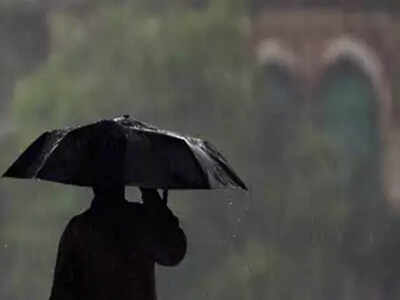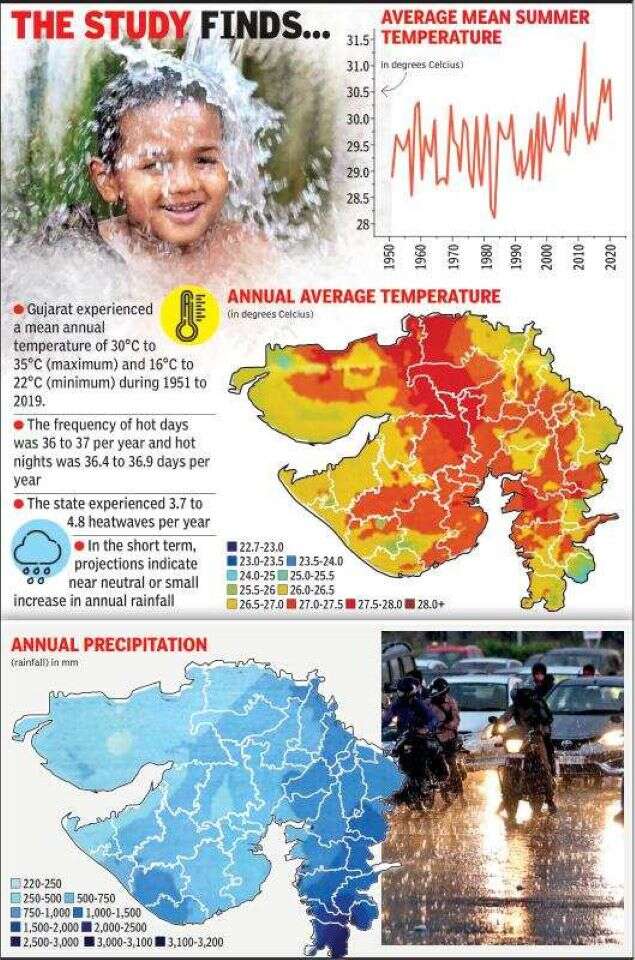- News
- City News
- ahmedabad News
- More hot days, heatwaves likely in Gujarat: Study
More hot days, heatwaves likely in Gujarat: Study

Using data of both temperature and precipitation (rainfall) from the Indian Meteorological Department (IMD) between 1951 and 2019, the study has made projections for the future. (Representative Image)
AHMEDABAD: The frequency of hot days, hot nights and heatwaves is projected to rise considerably in Gujarat, says a study commissioned by the state government as part of preparing the Gujarat State Action Plan on Climate Change (SAPCC).
In contrast, cold days and cold nights are projected to decline in the state.

Using data of both temperature and precipitation (rainfall) from the Indian Meteorological Department (IMD) between 1951 and 2019, the study has made projections for the future. “The projections of mean annual daily temperature suggest that there is an overall tendency of increase in temperature. The mean annual daily maximum temperature increase is observed more towards north and north-eastern districts,” the study says.
Except for the southern districts of Gujarat, the study observed “ a positive trend – (temperature rise by 1 degree C) in the mean annual daily temperature in almost all the other regions of the state.”
Environmentalist Mahesh Pandya says that the combination of Gujarat having a very long coastline and being an industrialised state, increases its vulnerability to climate change. “At such a time, the action plan ought to have specific measures to mitigate harmful effects of climate change. Air pollution owing to industrialization has to be reduced drastically as well,” he said.
In contrast, cold days and cold nights are projected to decline in the state.

Using data of both temperature and precipitation (rainfall) from the Indian Meteorological Department (IMD) between 1951 and 2019, the study has made projections for the future. “The projections of mean annual daily temperature suggest that there is an overall tendency of increase in temperature. The mean annual daily maximum temperature increase is observed more towards north and north-eastern districts,” the study says.
Except for the southern districts of Gujarat, the study observed “ a positive trend – (temperature rise by 1 degree C) in the mean annual daily temperature in almost all the other regions of the state.”
Environmentalist Mahesh Pandya says that the combination of Gujarat having a very long coastline and being an industrialised state, increases its vulnerability to climate change. “At such a time, the action plan ought to have specific measures to mitigate harmful effects of climate change. Air pollution owing to industrialization has to be reduced drastically as well,” he said.
FacebookTwitterLinkedinEMail
Start a Conversation
end of article
Quick Links
Delhi Air PollutionDelhi TemperatureChennai WeatherBangalore TemperatureCovid vaccination centres in DelhiCoronavirus in DelhiRTPCR test in GurgaonHyderabad RainPollution level in BangaloreDelhi SmogDelhi TemperatureNoida AQIGurgaon AQI todayFire in MumbaiMumbai RainsCovid 19 RT PCR Test in NoidaDelhi AQI todaySrinagar encounter
